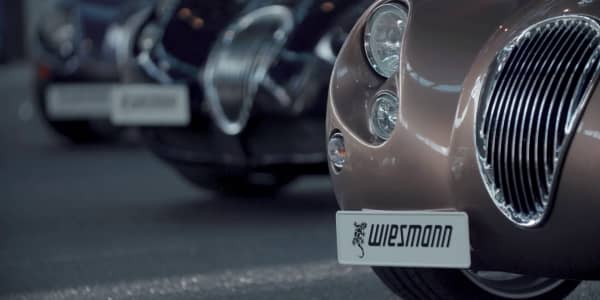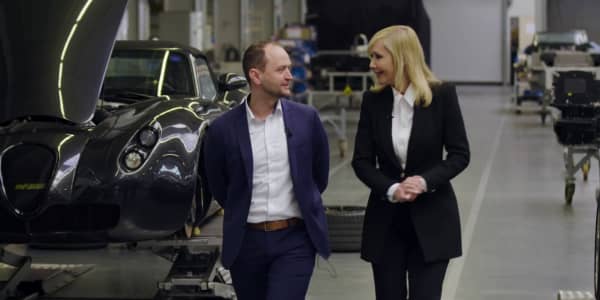Nostalgia has gripped the mobile phone world after reports that the iconic Nokia 3310 could make a return this year.
Mobile World Congress (MWC), one of the largest technology shows in the world, kicks off on Monday, where HMD Global, the company that now manufacturers Nokia phones, is rumored to release a revamped version of the handset, which originally hit the market in 2000.
Blackberry handset manufacturer TCL is also slated to release some devices.
All these classic brands making a comeback has got CNBC thinking about what other old devices should make a return and conducted a very unofficial poll of colleagues and analysts to come up with a wish list.
Motorola Razr V3 (2004)
More a piece of jewelry than a phone, the sleek and edgy Motorola Razr blended tech and fashion to make it one of the must-have phones of the 2000s.
"It was such a game changer at the time and a product that was so aspirational," Ben Wood, chief of research at CCS Insight, told CNBC by phone.
The phone's camera could take pictures at a 640 x 480 resolution and the device cost around $500.
Motorola is now owned by Chinese technology giant Lenovo.
Sony Ericsson W880 (2007)
Sony mixed music with this handset with the Walkman being a key feature. It was a time when phones were also becoming devices to store and listen to music.
The W880 could hold up to 900 full-length tracks in its 1GB memory, and came equipped with a 2-megapixel camera, according to a press release at the time.
It was just 9.4 millimeters thick, making it one of Sony Ericsson's slimmest phones.
"It was thin, it was cool, it was beautifully designed," Wood said.
Nokia 8110 (1996)
This was one of the first phones with a sliding cover and became famous for its appearance in the movie "The Matrix".
It was also known as the "banana phone" due to its curved shape. But the slider capability was also practical.
"The slider design was very iconic for the time and it meant that you could put the phone in the pocket and you wouldn't accidentally make phone calls," Ian Fogg, head of mobile at IHS, told CNBC by phone.
BlackBerry Bold (2008)
There are still newer BlackBerry Bold versions on the market, but the fans that CNBC spoke to want a fully revamped 2008 version.
When it debuted, the BlackBerry Bold had a leather-like back, a little rolling ball to move around icons, and the iconic QWERTY keyboard that made the devices so popular.
BlackBerry fell from grace in the mobile market, and has since licensed its brand to Chinese manufacturer TCL, which is launching some devices at MWC.
Many reviews at the time of release praised the Bold. Gizmodo called it BlackBerry's "most powerful, polished handset ever", according to a 2008 review.
Motorola StarTac (1996)
Twenty-one years ago, the Motorola StarTAC captivated consumers with its small shape and flip top.
It was one of the first devices to gain mass adoption with Motorola calling it the "world's smallest and lightest cellular phone available today," in a press release at the time.
The StarTAC weighed just 3.1 ounces and had a two-battery system in which the device automatically used the second battery when one had run out.
Nokia 3310 (2000)
Fans wanting a return of the Nokia 3310 might just get what they were waiting for this week, if the leaks and rumors online are true.
Several outlets have reported that an updated and revamped version of the Nokia 3310 will be released. Nokia devices were known for their durability, robustness and battery life.
There is a lot of nostalgia around the 3310 driven by the fact that it may have been many people's first phone.
"For many people it was the first phone people had. That means something, it's like your first car," Wood said.
Also, the classic game "Snake" was a huge hit.
IPhone 3G (2008)
The iPhone 3G followed the original iPhone which was released in 2007. It may not be that old but it's certainly a device that redefined smartphones.
With the iPhone 3G, Apple introduced GPS as well as 3G, but perhaps the most important part of the launch was the release of the App Store, which has become an increasingly important revenue-driver for the U.S. technology giant.
Apps now form a big part of the way we use mobile and Apple was one of the key drivers of the app economy.
LG Chocolate (2006)
LG's slider phone tapped into the trend for music on-the-go by combining mobile with a portable music player. But LG's handset offered a unique design to consumers with a dial in the middle to control music.
"Among the sea of Nokia phones, it was a fresh breath of air," Neil Shah, research director of devices and ecosystems at Counterpoint Research, told CNBC by phone.
Nokia N95 (2007)
Released the same year as the first iPhone, the Nokia N95's cutting-edge technology did little to stop the company's decline in the smartphone market.
The two-way sliding device had a larger screen, 3G mobile internet connectivity, a 5-megapixel camera and GPS with built-in mapping software.
"It was a phone with a great camera and was one of the last iconic designs the Nokia handset business created," Fogg said.





